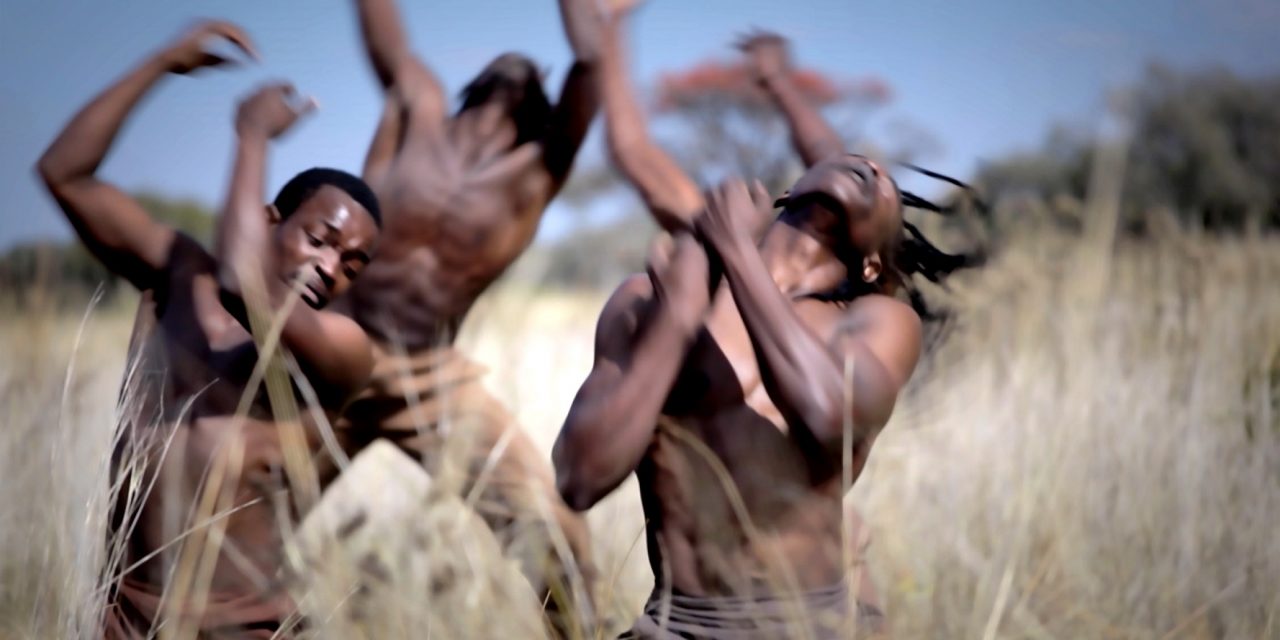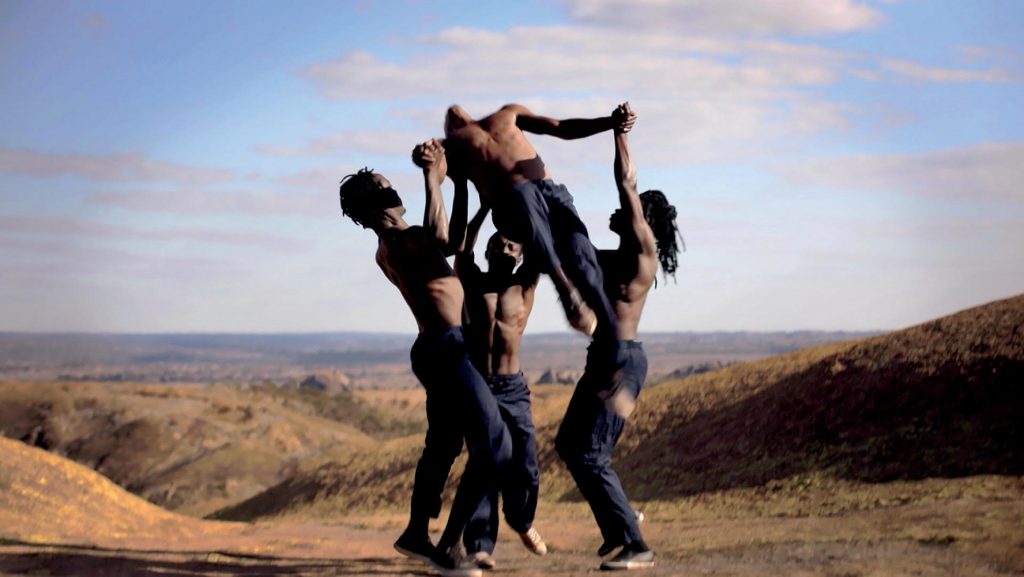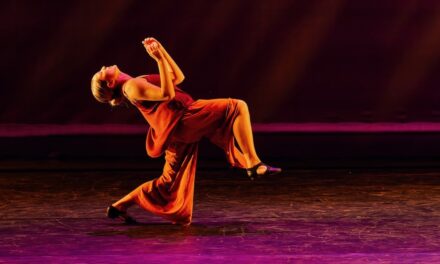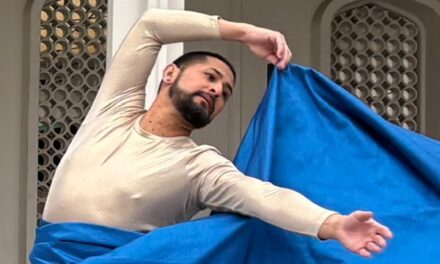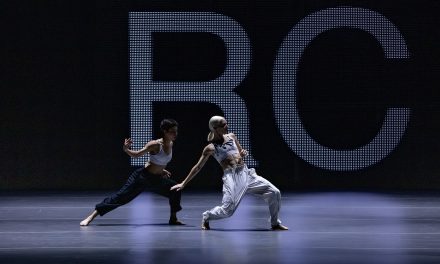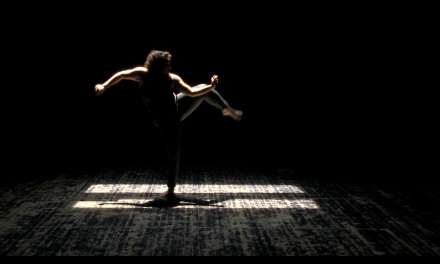On November 13-15, 2020, the 4th Annual Los Angeles Dance Shorts Film Festival (LADSFF),headed by Founder & Director Nicole Manoocherhri and Director Olivia Mia Orozco, presented two programs totaling 34 films from around the world. Each program featured 17 dance films, each film running approximately 10 minutes. Program 1 was covered by LA Dance Chronicle writer Tam Warner, and I observed Program 2 which included films from Poland, Brazil, United Kingdom, Belgium, Netherlands, Canada, Mexico, Spain, China and the United States. Several films were made pre-pandemic, others were filmed following the current CDC guidelines.
LADSFF began in 2017 and is headed by Organizers and Co-Directors Nicole Manoochehri and Olivia Mia Orozco who, in spite of the pandemic that closed studio, theaters and other venues, brought an audience together – albeit online.
Collective Loss (United States) was directed, choreographed, and performed by Alyssa Thompson with cinematography and editing by Luke Knezevic. A lone dancer moves through an empty parking structure and parking lot setting the atmosphere of isolation and a city whose streets are now void of traffic due to this “new normal” facing all of us. The work includes a wonderful music score (not credited), but the choreography is bland and the very rapid film transitions became extremely repetitive. Due to the choppy editing and repeating film clips, what choreography there is could not be fully enjoyed.
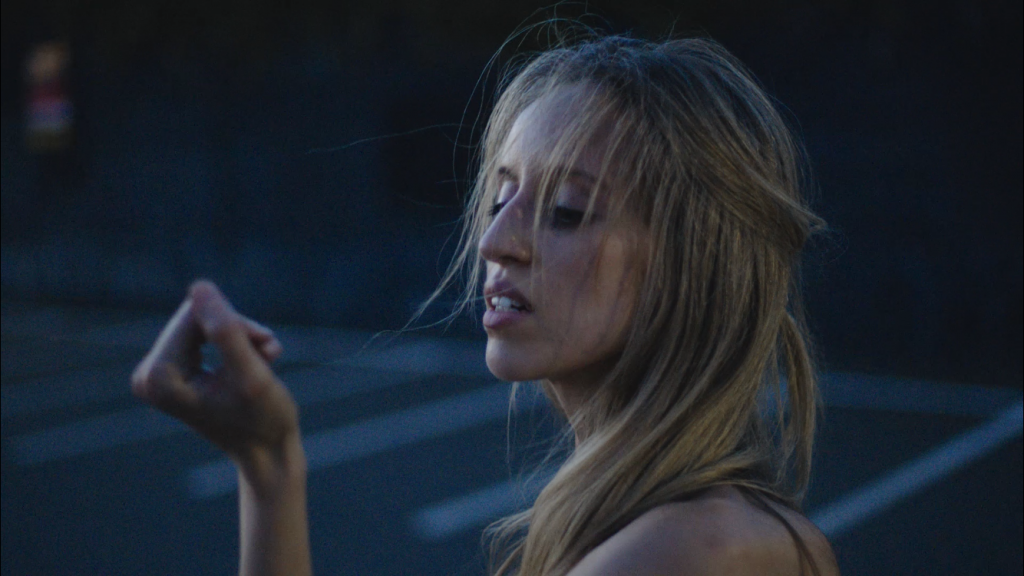
“Collective Loss – Directed, choreographed and performed by Alyssa Thompson – Photo courtesy of Los Angeles Dance Shorts Film Festival
Shot in black and white, Toporzeł (Poland) is a gorgeous and powerful film with a devastating message. The camera first takes on a soaring eagle’s view of a lush forest spanning across rolling hills. Soon we see seven male figures walking across the top of one of these mountains that has been completely ravaged by strip mining. Directed by Iwona Pasińska, Toporzeł features seven strong male dancers who perform dynamic in-place solos, separated by shots of unspoiled land or the eagle coasting above. When the camera pans out we discover that the men are performing on different levels of one gutted out mountain. There is a group section with static and somewhat robotic movement that reflects the toiling of workers, which is followed by all seven men climbing up the side of a rocky mountain only to perish. Mother Earth will outlast man!?
The Director of Toporzeł was Iwona Pasińska, the dramatic and apocalyptic music was composed by Henryk Mikołaj Górecki, Costumes by Andrzej Grabowski, and the seven extraordinary male dancers were Kacper Bożek, Jerzy Każmierczak, Zbigniew Kocięba, Dominik Kupka, Paweł Malick, Michał Przybyła, and Adrian Radwański.
OLHE-SE (Look at Yourself) (Brazil) is an animated film directed by Ilana Paterman Brasil whose scenes are repeated several times. A single animated woman, her back to the camera, twerking; four women lined up and performing a rhythmic dance comprised of low squats; and another single woman wearing a yellow cap walking while keeping time to the music by Evolução Das Minas . The figures are painted with water colors which change constantly to help create the movement. The film is cute with infectious music and pleasant colors, but the best thing going for OLHE-SE is that it is short.
WAKE (United Kingdom) is about the loss of a loved one and the celebration of her/his life. We follow a grieving woman (Sarah Farrow-Jones) from a beautiful church, into a lush forest and finally up to the top of a high mountain where she releases her loved one’s ashes to the winds. Directed by Katie Bear and Naomi Turner, the cinematography by Sam Finney is stunning, giving us a beautiful view of the countryside and surrounding landscape. Choreographed by Liv Lockwood, the movement is not complex, but offers up a genuine look at a person’s grieving, the sense that the deceased person is still nearby, the support from family and friends, and those left behind finally letting go. The music is by Ben Glass and the cast of WAKE included Sarah Farrow-Jones, Lucy Freeman, Ben McEwen, Sophie Northmore, Emma Pendle, Jack Sergison, with a supporting case of Lydia Baldchin, Joby Cosgrave, Victoria Horan, Carol Visa Kumar, Noah Ricketts, and Martha Scholefield.
Umbrellas have been a part of Asian culture for centuries, often taking on a major role in dance and theater. Between the Lines (United States) features a single female dancer, Stephanie Kim costumed in a bright red leotard and dancing on pointe amongst numerous white paper umbrella that she must navigate as they alter patterns. Directed and choreographed by Jen Guy Metcalf to music by Ezio Bosso, Between the Lines is visually beautiful and with movement that feels introspective in nature, but fortunately Kim resists over-emoting.
In the end, we are left with a bright red umbrella that stands out amid all the white ones. In some Asia cultures, this is used to ward off evil spirits. Between the Lines feels like a journey, or someone trapped or lost, but the destination is left unclear. The Director of Photography and Camera Operator was J. McMerty.
If you want to offer up an excellent example of how to make a dance for camera that completely reveals the movement, the venues and the story line while accepting the camera’s view, I suggest that you choose Making Men (Belgium) directed by Antoine Panier and performed by Dunia Dance Theatre. The narrator opens the film by explaining that he chose dance because, at the time, it felt the least masculine choice to make. He describes his complex relationship with his father and how he resisted acknowledging that he was gay.
The film takes a look at the coming of age as well as the sexual awaking of a gay black African man. We follow his journey from a tribal rite of passage, to his mixed feelings about his first same sex encounter, and then witness an extraordinary quartet of male dancers performing on a barren hillside to A. Vivaldi’s Nisi Dominus. Making Men is a beautiful examination of what exactly does masculinity mean.
The incredible dancers in Making Men are Tatenda Chabarwa, Tinashe Jerry, Peter Lenso, Carlton Zhanelo. Other music included Rhythms of the Chakras by Glen Velez and Murcof’s Camino.
The film titled She (Canada/United States) was written and directed by Adele Thomas. A young woman (Kennedy Knopf) living in a large city yearns for another in a different country. As the film shifts from her dancing on a rooftop to the same woman dressing in a gem beaded bodysuit dancing in an unspecified forest, I began to question whether or not this was more about one woman’s longing for the self she left behind when she relocated to the city. The dancer’s skill are better showcased while she runs and performs break dancing moves across the floor of the beautiful forest around her.
She was choreographed and powerfully performed by Kennedy Knopf, Cinematography by Julie Kim, Music by Susie and Laura Bishop, Intro Music by Garth Hodgson and Susie Bishop, Costumes by Greta Hedley, and Props by Dominic Mann-Bertrand.
Píngguǒ (Apple in English) is a film from China choreographed and directed by Xiong Jiang and extraordinarily beautiful cinematography also by Xiong Jiang. It is a tale of a woman’s relationship with her father from when she was a child through her becoming a young woman. The symbolism of the apple that runs through the film of a child growing up, becoming a woman, and acknowledging the realization that her memories may have been better than the reality. We watch as her father pulls away and she is left walking down the empty street that she traveled with him years before.
The choreography for Píngguǒ is comprised primarily of pedestrian movement, a father waltzing with his young daughter, and subtle but dramatic head movements. There is some modern dance involved, but the strongest elements of this film are the relationships between the characters and the stunning camerawork.
The performers in Píngguǒ included Dian Dian, Ergao Benson, Wangjiu, Jing Yi, Guan Xiao, and Gang. The one music credited in English is by Shepherd Boy. Píngguǒ was developed from the 6th Dance Camp of Ergao Dance Production Group (2019).
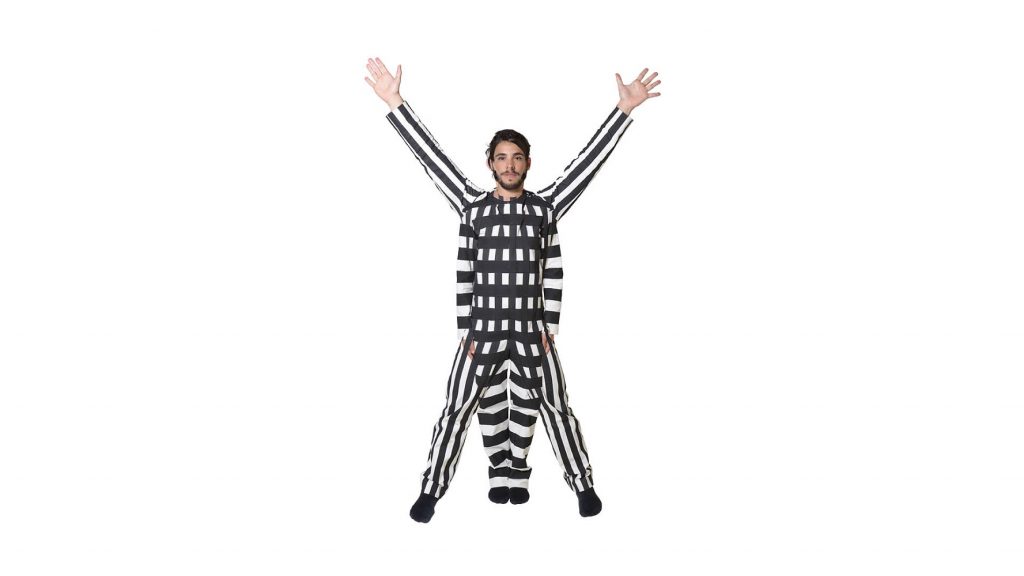
“Sum Of All Parts” – Directed by Lukáš Timulak & Peter Bil’ak – Photo courtesy of Los Angeles Dance Shorts Film Festival
The Sum Of All Parts (Netherlands) was Directed by Lukáš Timulak & Peter Biľak with choreography and editing by Timulak. It is primarily a showcase for special effects. The dancers wear black and white costumes made up of varying designs (strips, dots, plaids, etc.). They were filmed separately, but move through each other like ghosts walking through walls, and several times join together to form an almost solid black figure. Although some of the choreography was interesting, these “tricks” quickly become old, however, and the moving black and white tires one’s eyes – especially while watching the film on a computer screen. The dancers included Celia Amade, Aurelie Cayla, Valentina Scaglia, Jirí Pokorný, and Fernando Troya. The cinematography is by Taco Zwaanswijk, music by Hauschka, with costume design by Bil’ak.
Gorgeously filmed and filled with abstract symbolism, Y’U, had things to do in the other world (Mexico) investigates the spiritual and the earthly physical. Directed by Joyce Islas, Mariana Fernández, Julio López & Sebastián Rojo, Y’U often feels like living inside another’s dream. Two women spend part of this film physically tied together by their hair or a long white cloth rope. Though the film is visually gorgeous with women lying in ancient trees, floating in water, performing rituals with lit candles, or folding paper at a table with an hour glass nearby, Y’U borders on becoming too abstract to follow.
The photography direction for Y’U, had things to do in the other world is by Julio Lopez, camera by Lopez and Juan Carlos Valdes, and original music by DavÎ Simard. The performers were not credited separately.
WEARNHEM (Netherlands), directed by Alberto Villanueva & Jurrien Schobben has everything that any choreographer or filmmaker of dance for camera could wish for: an obviously huge budget, elegant costumes, beautiful lighting, live music, access to extraordinary venues and amazing dancers. The most honest scene in this film, however, takes place in an old church with a large eagle and the narrator speaking the storyline’s truth to the camera. The rest of the film comes across as self-indulgent, overly opulent, and a fashion show for costumes.
Concept and choreography for Wearnhem is by Jurriën Schobben and Alberto Villanueva. Dancers: Lucas Donner, Yulanne De Groot, Kim Van Der Put, Pascal Schut, and Nienke Wind. Music: Tom Trapp. Musicians: René Berman, Winnie Hanel, Joke Den Heijer, Joost Hillen, Bart Peters, Alexejpevzner, Meintje De Roest, Eveline Rosenhart, and Marieke Wenink. Text: Jibbe Willems. Costumes: Zyanya Keizer. Lighting Design: Rinaldo Klein Bleumink and Leroy Peters.
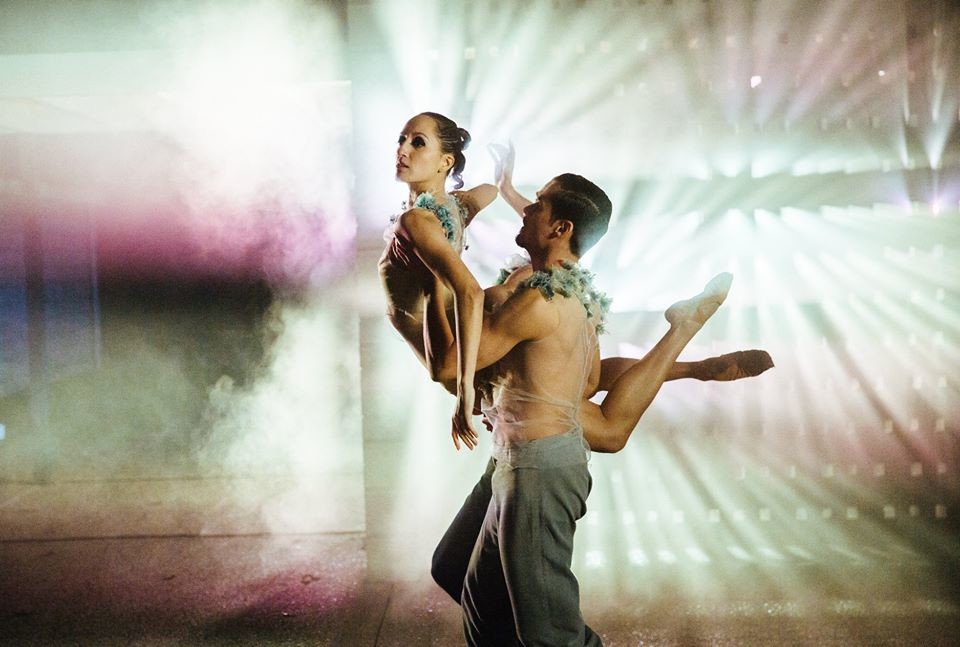
“WEARNHEM” – Directed by Alberto Villanueva & Jurrien Schobben – Photo courtesy of Los Angeles Dance Shorts Film Festival
The award winning Traces (Spain) features two beautiful dancers Paula Tato and Junyi Sun. Directed and written by Alex Murrull, and wonderfully choreographed by Maria Rovira, Traces quickly becomes two parallel worlds that briefly overlap, and its characters finding temporary, if not real, love. Tato and Sun perform amazingly athletic movement in the very same small single apartment, but except for one brief scene, they are never together. Rovira leaves nothing in that room unexplored and the two dancers are fearless. They move as if they are on a large empty stage and none of the movement looks cheated. The title comes from the physical traces left in the room by each character: A book left on the floor, a pair of glasses found on a table, or an earring. The concept is ingenious and the film is a joy.
Other credits for Traces include: Director of Photography, Frederic Comí; Music, Dabú; and Costume Designer, Ariadna Papió.
The word agon has several meanings. In Ancient Greek it was a contest in which prizes were awarded in any of a number of events such as athletics, drama, music, poetry, and painting. In Greek drama, it was a formalized debate or argumentation. The definition, however, that best fits the film directed by Manuel Nogueira is from Greek Literature meaning conflict between the protagonist and the antagonist. In Agon (Brazil), the conflict is between humans and the lockdown caused by the Covid-19 pandemic.
Nogueira sets several dancers confined to their homes and he exposes the raw mental anguish that results from being left too long in isolation. The music by Brazilian composer Lorenzo Fernândez as interpreted by Miguel Proença is not only dramatic, but it enhances the tension. As the music builds in intensity, it also accelerates. The dancers’ movements visualizes this crescendo culminating with a woman simulating the act of hanging herself. It is a powerful film that is difficult to watch due to its realism.
The Dancers in Agon included: Ana Beatriz Nunes, Ariany Dâmaso, Bruno Gregorio, Bruno Rodriques, Camila Ribeiro, Carolina Martinelli, Erika Ishimaru, Fabiana Ikehara, Jessica Fadul, Luiz Crepaldi, Leonardo Muniz, Leonardo Silveira, Manuel Gomes, Marcel Anselmé, Márcio Filho, Marina Giunti, Renata Bardazzi, and Victoria Oggiam.
It is easy to see why Lawrence Fu’s film Burden (United States) received the Dare to Dance in Public Film Festival Award for Best Editing. Fu not only weaves his camerawork in, around and through moving bodies, but through the editing process, he manages to choreograph buildings. Performed to music by composer Ynot, the fusion of Hip-Hop and contemporary style dancing builds from introspective solos to dynamic duets that shift from external urban settings to beautiful interior lobbies, passageways and more. The wonderfully entertaining choreographers/dancers were Lawrence Fung, Callista Mincks, Angelo “Vo Vera” Sapienza, and Miquella Young.
Also, from the United States, Claim was directed by Keely Song and features what is not often seen, six pregnant women performing on black stools in the shallow water of a lake or ocean. We see them via camera on land and via drone camera hovering overhead. Shot in soft grays and vivid closeup flesh tones, the cinematography by Angela Rosales Challis is luscious, calming and beautiful. Claim is about the joy of motherhood, the experiences during pregnancy and the process of birth, i.e. the waiting, the physical discomfort, the pain and the joy, etc. The symbolism of water is obvious, but it is so essential to us all. The film editing shifts back and forth from the women in the water to their being in labor and finally a newborn placed upon her/his mother’s chest. I loved this film.
Dancers and collaborators of the very appropriate movement were: Jenessa Swan Berg, Lauren Evans, Audrey Higley, Jessica Hulka, Eliza Llanham Jones, and Alyssa Lyman. Birth Cinematographer: Sarah Asay, Touch of Life. Music: Pulse Aria by Stephen Taylor with viola performance by Claudine Bigelow. Editing: Keely Song and Angela Rosales Challis. Drone operator: Walter Mirkss.
Audiences do not often get to experience the sensations felt and/or seen by a dancer, nor do they hear the dancer’s breathing. In this too short film titled Fragments (Germany) director Can Heinrich Toepffer attempts to share those performance elements with the viewers by avoiding the frontal perspective and having the camera move rapidly around or near the dancer – not a new concept. The dancer’s breathing becomes part of the sound design by Tarek Soltani, and although as the film now stands, portends promise, Fragments ends before one can truly make a judgement. There is also a very noticeable and unforgivable music edit at the end. The talented dancer is Misha Buchner and the choreography is by Myriam Lucas, Toepffer and Buchner.
Sadly, the weakest film was saved for last. The Grid (United States) features a woman (Shelley Siller) enjoying dancing alone in her favorite courtyard while listening to music she fancies (Tourist) via headsets. The film and the choreography was enjoyed more by Siller than by this viewer, but I applaud her efforts. The Grid was directed by Jeffrey Prioleau.
To learn more about the Los Angeles Dance Shorts Film Festival, click HERE.
Written by Jeff Slayton for LA Dance Chronicle.
Featured image: Making Men – Photo ©Antoine Panier – Courtesy of Los Angeles Dance Shorts Film Festival

